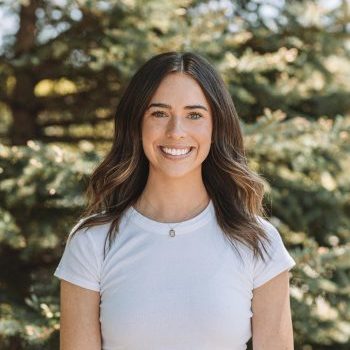
Medication-assisted treatment (MAT) is an approach mainly used for treating people with opioid or alcohol addictions that can help manage withdrawal symptoms and control cravings.
MAT has proven to be an effective form of treatment when used in conjunction with behavioral therapy and other treatment approaches aimed at getting at the roots of addiction.
What Medications Are Used In MAT?
Medications used in MAT have been approved by the U.S. Food and Drug Administration (FDA) and have been proven through scientific research to be effective in treating addiction.
Medications for opioid use disorder include:
- methadone
- naltrexone
- buprenorphine
- Suboxone (a name brand for buprenorphine/naloxone)
Medications for alcohol use disorder include:
- naltrexone
- disulfiram
- acamprosate
When people are better able to deal with cravings and handle withdrawal symptoms using these medications, they can benefit more from MAT’s behavioral therapy approaches.
Medications For Opioid Use Disorder (OUD)
If you are facing an OUD, programs that offer MAT can help you overcome strong drug cravings and uncomfortable withdrawal symptoms so that you can focus on achieving long-term recovery.
Each of the MAT medications listed below works in a different way, but it’s worth noting that they interact with the same neurotransmitters as opioids do.
Medications for opioid addiction either engage the opioid receptors in the brain or block them to control drug cravings and withdrawal symptoms. Here’s how they work.
Methadone
Methadone is an opioid agonist, which means that it engages opioid receptors similar to the way that heroin and other powerful opiates and opioids do.
However, methadone is much milder than these opioid drugs, so while it prevents difficult withdrawal symptoms and drug cravings, it also doesn’t produce the same euphoric high.
Buprenorphine
Buprenorphine is a partial agonist. Due to its partial activation of opioid receptors, withdrawal symptoms and cravings are reduced, and a mild high may be experienced at low or moderate doses.
Suboxone
Buprenorphine can also be used together with another medication called naloxone, an opioid antagonist that is most commonly used to reverse an opioid overdose.
Naloxone is combined with buprenorphine in a medication called Suboxone, which is used to help prevent relapses, intense drug cravings, and severe withdrawal symptoms.
Naltrexone
Naltrexone is not an opioid, but it binds to and blocks opioid receptors, which both prevents drug cravings and blocks the euphoric effects of opioids.
People must completely detox from opioids and opiates before starting a MAT program using naltrexone.
Medications For Alcohol Use Disorder (AUD)
Medications that treat AUD function in a similar way as medications used for treating OUD in that they influence the biochemical mechanisms of alcohol.
Naltrexone
Alcohol affects your body’s opioid receptors by changing how opioid receptors bind, by increasing opioid building blocks for proteins (called peptides), or both.
So when naltrexone blocks opioid receptors, it blocks the euphoric effects of drinking alcohol much in the same way that it blocks the euphoric effects of opioid use.
Acamprosate
Acamprosate is often used to help people who have already stopped drinking alcohol maintain their sobriety.
While how exactly the medication works is not fully understood, it is believed to restore chemical balance in the brain that may have been disturbed by chronic alcohol use or the stress of withdrawal.
Disulfiram
Disulfiram is a MAT medication that discourages people from drinking by causing them to feel physically ill if they do.
It works by preventing the body from metabolizing alcohol, which leads to the build-up of the toxic compound acetaldehyde.
Symptoms from drinking while taking disulfiram may include:
- nausea
- vomiting
- sweating
- breathing difficulty
- anxiety
- chest pain
- headache
Find Substance Abuse Treatment Today
If you or a loved one is in need of substance abuse treatment, call or visit AddictionResource.net today to discover available treatment options.
Addiction Resource aims to provide only the most current, accurate information in regards to addiction and addiction treatment, which means we only reference the most credible sources available.
These include peer-reviewed journals, government entities and academic institutions, and leaders in addiction healthcare and advocacy. Learn more about how we safeguard our content by viewing our editorial policy.
- British Journal of Clinical Pharmacology - Pharmacological approaches to methamphetamine dependence: a focused review
https://www.ncbi.nlm.nih.gov/pmc/articles/PMC2883750/ - Journal of Psychiatry & Neuroscience - Influence of the endogenous opioid system on high alcohol consumption and genetic predisposition to alcoholism
https://www.ncbi.nlm.nih.gov/pmc/articles/PMC167184/#:~:text=Alcohol%20stimulates%20the%20central%20endogenous,%2C92%2C93%20or%20both. - MedlinePlus - Acamprosate
https://medlineplus.gov/druginfo/meds/a604028.html - MedlinePlus - Buprenorphine Sublingual and Buccal (opioid dependence)
https://medlineplus.gov/druginfo/meds/a605002.html - MedlinePlus - Disulfiram
https://medlineplus.gov/druginfo/meds/a682602.html - MedlinePlus - Naltrexone
https://medlineplus.gov/druginfo/meds/a685041.html - National Alliance on Mental Illness (NAMI) - Acamprosate
https://www.nami.org/About-Mental-Illness/Treatments/Mental-Health-Medications/Types-of-Medication/Acamprosate#:~:text=What%20Is%20Acamprosate%20And%20What,continue%20to%20not%20use%20alcohol. - National Alliance on Mental Illness (NAMI) - Disulfiram
https://www.nami.org/About-Mental-Illness/Treatments/Mental-Health-Medications/Types-of-Medication/Disulfiram#:~:text=Disulfiram%20works%20by%20blocking%20the,alcohol%20while%20taking%20the%20medication. - Substance Abuse and Mental Health Services Administration (SAMHSA) - Buprenorphine
https://www.samhsa.gov/sites/default/files/quick-start-guide.pdf


